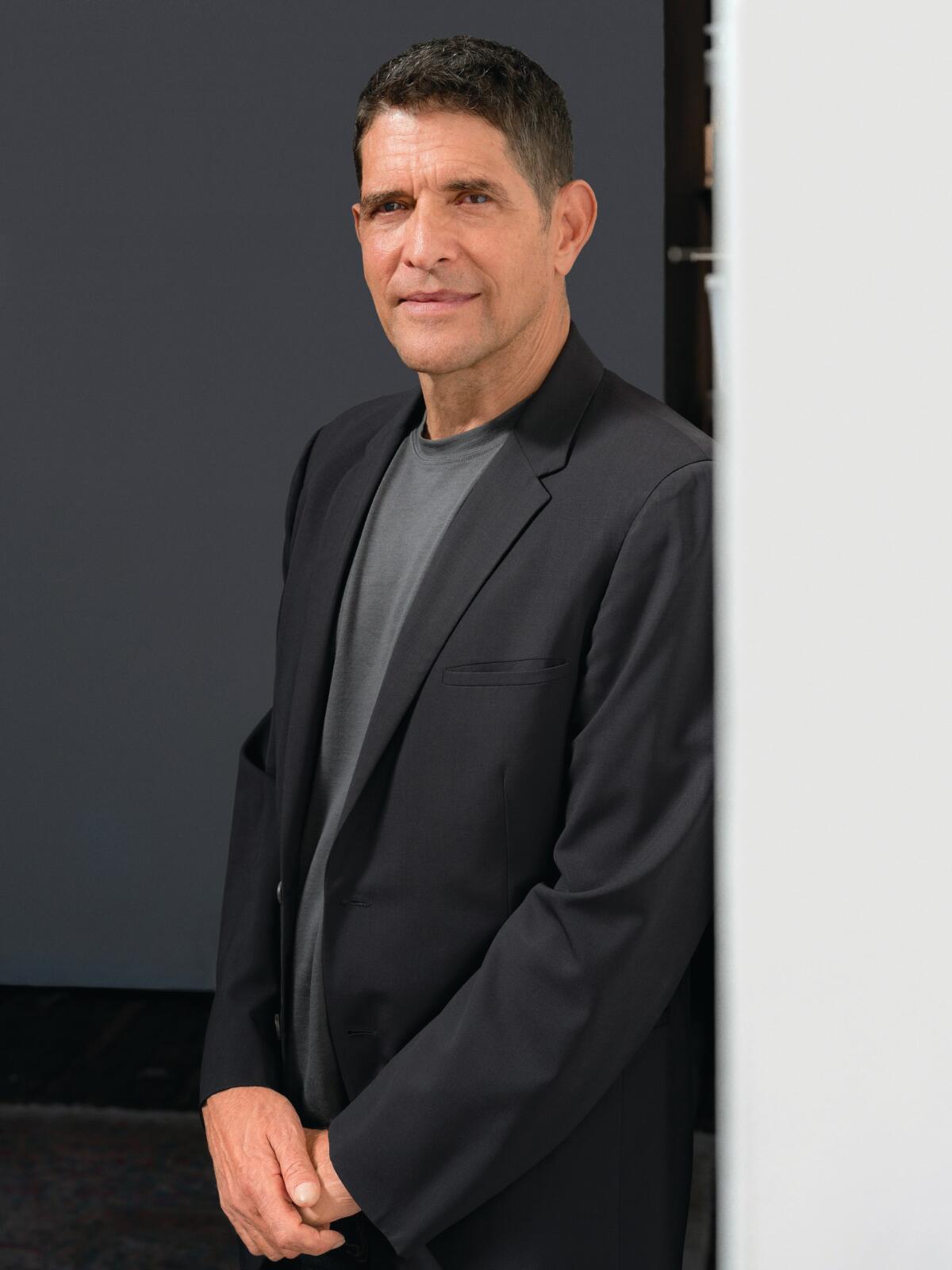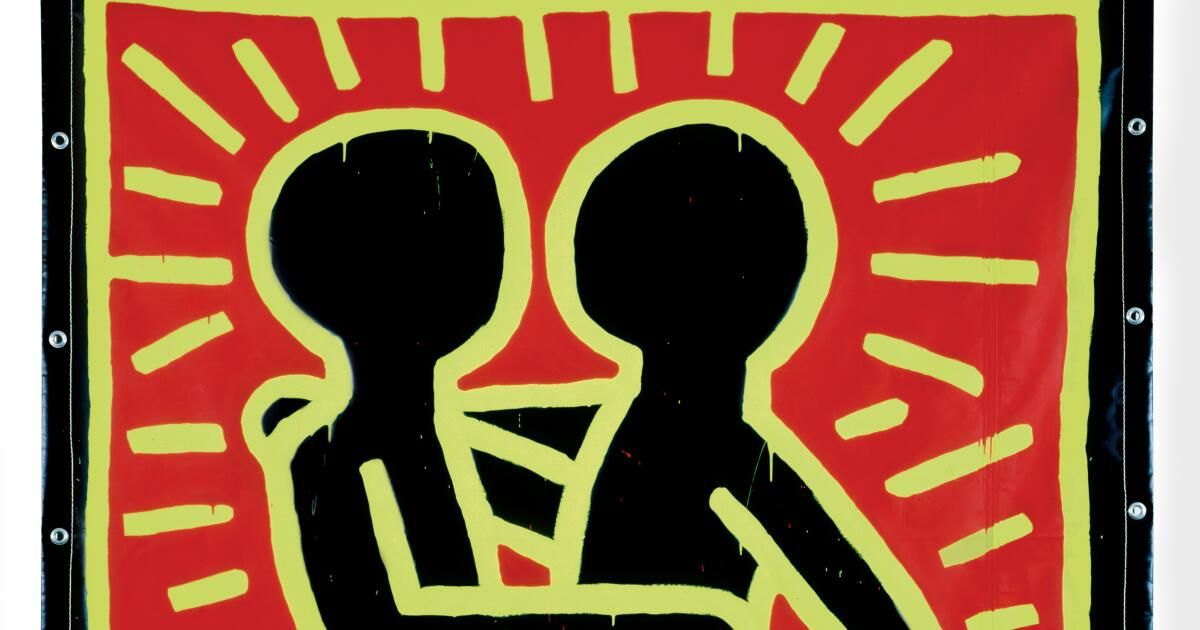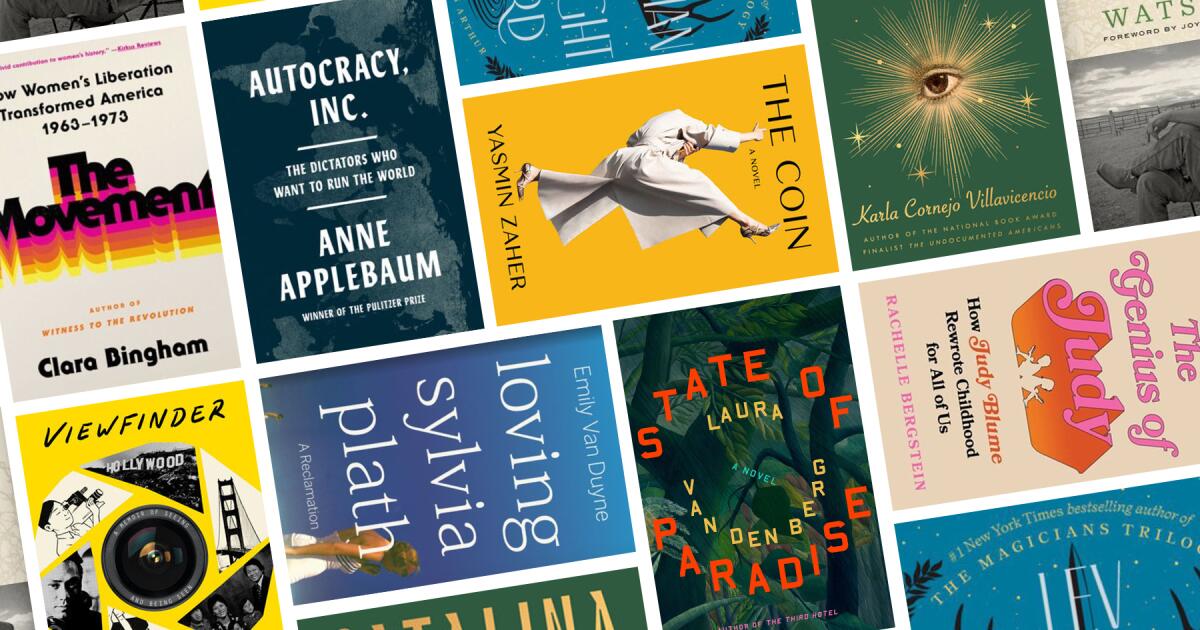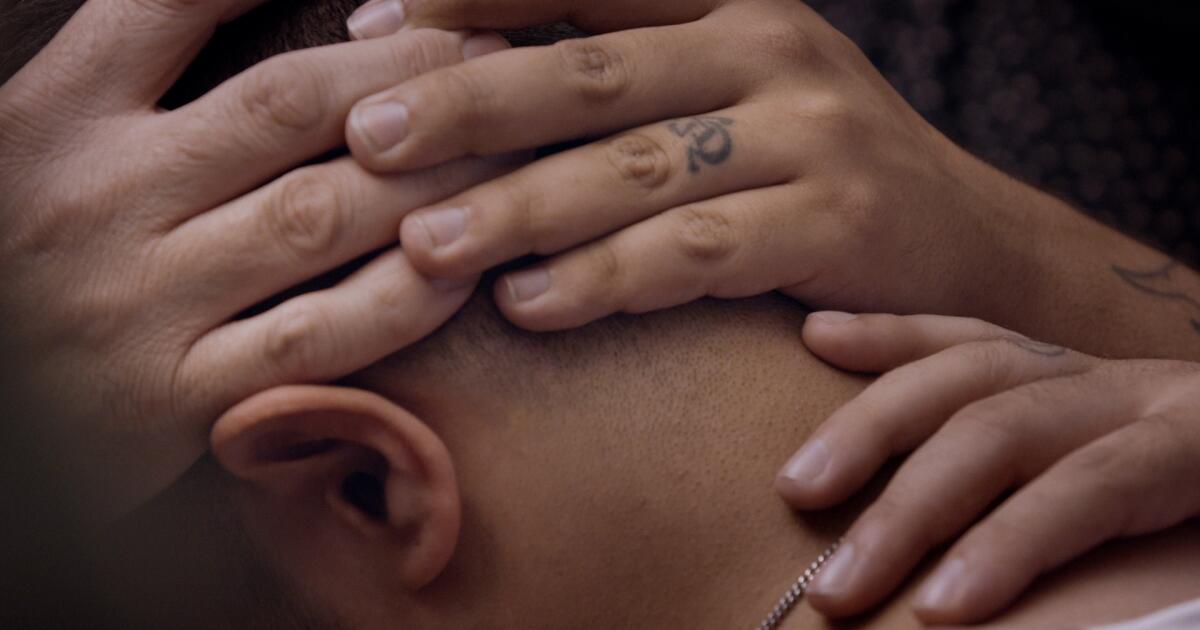Book Review
Radiant: The Life and Lineage of Keith Haring
By Brad Gooch
HarperCollins: 512 pages, $40
If you buy books linked to on our site, The Times may earn a commission from Bookshop.org, whose fees support independent bookstores.
I began reading Brad Gooch's biography of Keith Haring with the final chapter, about Haring's untimely death from AIDS. I don't usually read out-of-order biographies, but since I (like many) knew very well how Haring died, I hoped I could learn something different by finishing at a time when the artist was still alive.
Fortunately, you don't have to read “Radiant” backwards to know the living Haring. Gooch, author of sensitive biographies of Flannery O'Connor and Frank O'Hara, set out to show how much Haring lived and created in just 31 years, and he more than succeeds. “Radiant” not only gives us a long-awaited appreciation of Haring as an important artist. He also paints a stimulating portrait of a young artist finding himself and his calling.
From the time he was old enough to hold a pencil, Haring learned to draw from his father and a Disney sketchbook, creating Mickey Mouse from two circles. He always made art. The question for him was why? His parents suggested that he become a commercial artist. But once he discovered Robert Henri's book “The Art Spirit,” Haring knew that he was not interested in “art as a means of making a living” but, as Henri writes, “as a means of living a life.” .
Haring found his home at the School of Visual Arts in New York, where he enrolled in 1978. “It was like landing in a candy store, or better yet,” he wrote in his diary, “in a gay Disneyland.” A friend recalled that Haring struggled to stay “within the confines of his classes. “You couldn’t open a broom closet that he hadn’t painted or transformed.”
One day during this period, Haring noticed an “empty panel covered with soft matte black paper on a station wall” on the subway, and the rest, as they say, is history. “Over the next five years, he would make more than five thousand chalk drawings in the five boroughs of New York City,” Gooch writes, “realizing one of the largest public art projects ever conceived.”
Gooch draws on Haring's prolific diaries, which reveal a passionate but pragmatic young artist. Interestingly, even on his 24th birthday, Haring seemed to sense his future iconic status. “Today I am 24 years old. “24 years is not a long time, and it is also long enough,” Haring wrote. “I have added many things to the world. … I know, as I do these things, that they are 'real' things, maybe more 'real' than I am, because they will stay here when I am gone.”
“Untitled” by Keith Haring, 1982, vinyl ink on vinyl canvas.
(David Regen / Gladstone Gallery / HarperCollins)
It was the year Haring turned 24, 1982, that a syndrome called GRID, or “gay-related immunodeficiency,” was first reported. The following year, Haring showed the first symptoms of HIV infection.
1982 also found the artist busy with his first gallery show, where a quarter of a million dollars worth of his works were sold and Andy Warhol stopped by. Warhol would take Haring, along with Jean-Michel Basquiat, under his legendary wing. Not all young artists receive advice from their still-living hero: Haring considered Warhol “the most important artist since Picasso.”
Gooch, “as a poet and fiction writer, also young and living downtown at the time,” obviously has a great personal attachment to and understanding of Haring and his art. His chronicle of Haring's volcanic rise is deeply engaged with the culture of the time and place, not just the art world but also the gay community and New York. But at its core, “Radiant” is the story of a young artist struggling with the impulse to create and the challenges of commercial success.

Brad Gooch.
(Jack Pierson/HarperCollins)
And there was no doubting Haring's fame once she found herself competing with her friend Madonna for men. Even Warhol acknowledged in his diary that he was jealous.
Perhaps Gooch's most important contribution as a biographer is solidifying Haring's reputation as a serious political artist. After Ronald Reagan's election, Haring described him as a figure “with a television head, waving an American flag. …he has a cross in his hand. On the other hand, he has missiles.”
Haring's drawings of penises and gay sex were, as Gooch rightly puts it, “automatically political” for the time. “Keith was heroic in including gay content in his work,” said poet John Giorno, at a time “when we all know that being a gay artist is the kiss of death.” Haring memorably advocated for safe sex during the AIDS epidemic, with images of condoms and messages like “Safe sex or no sex.”
While modern audiences are more likely to understand the importance of these themes, many critics of the time dismissed Haring's work as “fast food,” as one put it, adding: “It's a good time, it's dancing on a Saturday.” the night, it's lively, but cool, no.” One curator blamed Haring's commercial appeal for a reluctance to take his art seriously, saying, “I think Haring was so successful that other artists couldn't forgive him.” Gallerist Jeffrey Deitch noted that most artists who enjoyed Haring's level of financial success would have produced even more salable work. But Haring was committed to public projects like the murals, which he completed for little or no compensation.
In 1987, during a period of long travel, Haring noticed he was short of breath. The following year, while in Tokyo, he discovered a small purple spot on his leg which, when he returned to New York, was confirmed to be Kaposi's sarcoma. Haring told almost no one of his diagnosis in July 1988. In August, Basquiat died of a heroin overdose at age 27. The writer Glenn O'Brien had once asked Basquiat who was his favorite painter of his own generation. “She didn't hesitate, but he said, 'Keith Haring.'”
When Haring's lover, Juan Dubose, died of AIDS, the artist said: “Now I call our friends and it is very difficult, because telling them that Juan had died of AIDS is the same as telling them that I am going to die.” of AIDS. She hadn't even told my parents that she was sick yet and had to tell them about Juan.”
Haring told reporters that the only thing he feared was not being able to continue working. “That's the point I'm at now, not knowing where it ends, but knowing how important it is to do it now.” He would later write: “Artists are never really prepared to die.” He went to the studio and worked as usual two weeks before he died. Gooch describes the death of his subject with intent: “Keith Haring lived until 4:40 a.m. on February 16, 1990.”
We all die; Haring lived as fully as he could for as long as he could. The tragedy is undeniable, but so is the triumph of Haring's art, advocacy, and public spirit. Gooch’s “Radiant” has given us a more vibrant and complete picture of the enduring gifts of Keith Haring’s life.
Jessica Ferri is the owner of Womb House Books and the author, most recently, of “Silent Cities San Francisco.”












